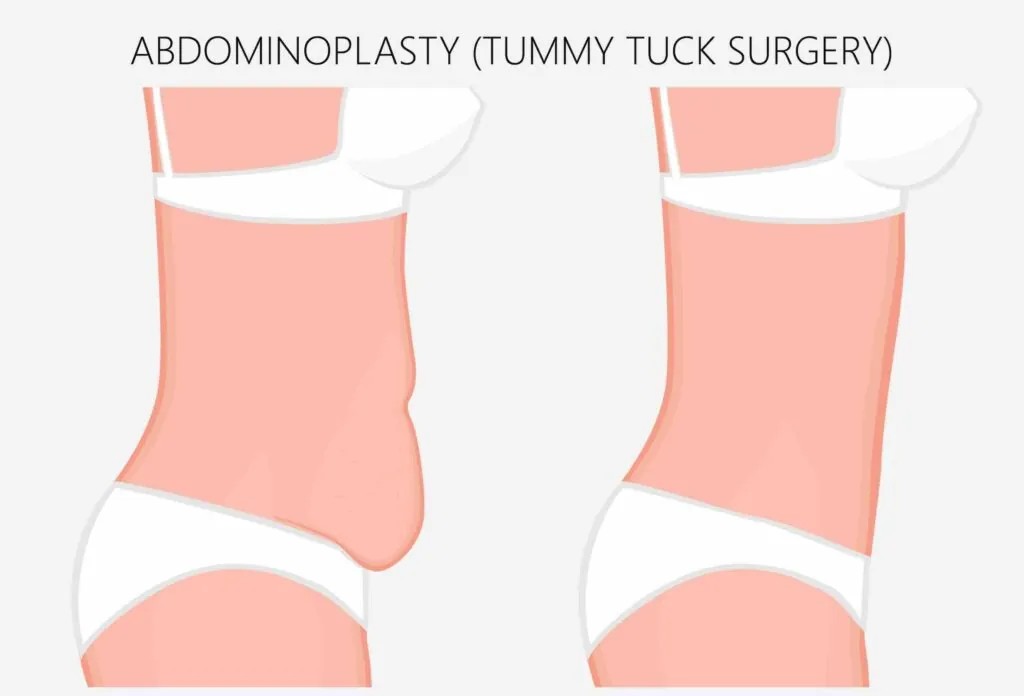Introduction to Medicaid Coverage
Medicaid is a government-funded healthcare program that provides coverage for eligible individuals who have low income and limited resources. It plays a crucial role in ensuring access to healthcare for vulnerable populations in the United States. However, the coverage provided by Medicaid varies depending on the state and the specific circumstances of each individual. In this article, we will explore the relationship between Medicaid coverage and tummy tucks after a C-section.
What is a tummy tuck and how is it related to a C-section?
A tummy tuck, also known as abdominoplasty, is a surgical procedure that aims to reshape and tighten the abdomen. It is often sought after by individuals who have excess skin and weakened muscles in the abdominal area, which can result from pregnancy, significant weight loss, or natural aging. A C-section, on the other hand, is a surgical procedure performed to deliver a baby through an incision in the mother’s abdomen and uterus.
The connection between a tummy tuck and a C-section lies in the fact that many women who have undergone a C-section may experience changes in their abdominal area. The stretching and separation of abdominal muscles during pregnancy, combined with the incision made during the C-section, can result in loose skin and weakened abdominal muscles. As a result, some women may consider a tummy tuck to restore their pre-pregnancy abdominal contour.
Can you get a tummy tuck covered by Medicaid after a C-section?
Whether Medicaid covers a tummy tuck after a C-section varies by state and is subject to certain criteria. Generally, Medicaid considers a tummy tuck to be an elective cosmetic procedure, which means it is not typically covered unless it is deemed medically necessary. However, some states may provide coverage for a tummy tuck if it is deemed medically necessary to correct functional impairments or significant physical discomfort.
To determine if Medicaid covers a tummy tuck after a C-section, it is essential to consult with your healthcare provider and thoroughly review your state’s Medicaid guidelines. Your healthcare provider will assess your condition and submit the necessary documentation to support your case for medical necessity. It is important to note that approval for coverage is not guaranteed and may be subject to review by Medicaid officials.
Factors to consider when determining Medicaid coverage for a tummy tuck after a C-section
When determining Medicaid coverage for a tummy tuck after a C-section, several factors come into play. First and foremost, medical necessity is a crucial consideration. Medicaid typically covers procedures that are deemed medically necessary to correct functional impairments or alleviate significant physical discomfort. Therefore, it is essential to demonstrate that the tummy tuck is not solely for cosmetic purposes but rather to address a specific medical condition or physical impairment.
Additionally, each state has its guidelines and requirements for Medicaid coverage. These guidelines may include specific criteria that need to be met, such as documented evidence of failed non-surgical treatments or objective measurements of physical impairment. It is important to familiarize yourself with your state’s guidelines and work closely with your healthcare provider to ensure all necessary documentation is provided to support your coverage case.
Lastly, it is crucial to consider the financial implications of seeking a tummy tuck after a C-section. While Medicaid may provide coverage for the procedure, there may still be out-of-pocket expenses associated with the surgery, such as deductibles, co-pays, or additional fees. It is advisable to consult with your healthcare provider and the Medicaid office in your state to understand the potential costs and financial obligations involved.
Alternatives to a tummy tuck after a C-section
If Medicaid coverage for a tummy tuck after a C-section is not available or not deemed medically necessary, there are alternative options to consider. One such alternative is non-surgical treatments that focus on improving the appearance of the abdominal area without the need for surgery. These treatments may include non-invasive body contouring procedures, such as radiofrequency or laser treatments, which can help tighten the skin and improve the overall contour of the abdomen.
Another alternative to a tummy tuck is a dedicated exercise and diet plan. While it may not address loose skin or separated abdominal muscles to the same extent as a tummy tuck, a well-designed exercise and diet regimen can help improve muscle tone and overall body composition. Consulting with a qualified fitness professional or a registered dietitian can guide exercises and dietary modifications that can help achieve the desired results.

Understanding the pain and recovery associated with a tummy tuck compared to a C-section
The pain and recovery associated with a tummy tuck after a C-section can vary significantly. While both procedures involve surgical incisions, the extent of surgery and the recovery process differ. A C-section is a major surgery that requires a longer hospital stay and a more extensive recovery period compared to a tummy tuck. The pain and discomfort after a C-section are primarily related to the surgical incision and the healing of the uterus, while a tummy tuck focuses on the abdominal muscles and skin.
A tummy tuck generally involves a horizontal incision across the lower abdomen, which allows for the removal of excess skin and the tightening of abdominal muscles. The recovery period for a tummy tuck is typically shorter compared to a C-section, but it may still involve discomfort, swelling, and limited mobility. Pain medication and proper post-operative care, including wearing compression garments and following a prescribed activity level, are essential for a smooth recovery.
Before and after results of a mini tummy tuck after a C-section
A mini tummy tuck is a less invasive version of a full tummy tuck and is often performed on individuals who have a smaller amount of excess skin and muscle laxity below the navel. After a C-section, some women may opt for a mini tummy tuck to address specific areas of concern while avoiding a more extensive surgery. The before and after results of a mini tummy tuck can vary depending on individual factors such as the amount of excess skin, the condition of the abdominal muscles, and the overall body composition.
Before undergoing a mini tummy tuck(mini abdominoplasty) after a C-section, it is crucial to have a comprehensive consultation with a board-certified plastic surgeon. During the consultation, the surgeon will assess your specific situation, discuss the expected outcomes, and explain the potential risks and complications associated with the procedure. It is important to have realistic expectations and understand that while a mini tummy tuck can improve the appearance of the abdomen, it may not eliminate all aesthetic concerns.
Tips for navigating Medicaid coverage for a tummy tuck after a C-section
Navigating Medicaid coverage for a tummy tuck after a C-section can be a complex and challenging process. Here are some tips to help you navigate the process:
- Consult with your healthcare provider: Your healthcare provider plays a crucial role in determining whether a tummy tuck is medically necessary and can provide the necessary documentation to support your coverage case.
- Familiarize yourself with your state’s Medicaid guidelines: Each state has its guidelines and requirements for Medicaid coverage. Understanding these guidelines will help you determine if you meet the criteria and what documentation is needed to support your case.
- Be proactive and persistent: Navigating Medicaid coverage can be a lengthy and bureaucratic process. It is important to be proactive in gathering the necessary documentation, submitting the required forms, and following up with Medicaid officials to ensure your case is being reviewed.
- Seek assistance if needed: If you find the process overwhelming or confusing, consider seeking assistance from organizations or professionals who specialize in Medicaid and healthcare advocacy. They can provide guidance and support throughout the process.
Other financing options for a tummy tuck after a C-section
If Medicaid coverage for a tummy tuck after a C-section is not available or not deemed medically necessary, there are other financing options to consider:
- Personal savings: Saving up for the procedure over time can be a viable option for those who have the financial means and are willing to wait until they can afford the surgery.
- Financing plans: Some plastic surgeons offer financing plans that allow patients to pay for the procedure in installments over a specified period. These plans may have interest rates or fees associated with them, so it is important to carefully review the terms and conditions before committing.
- Medical credit cards: There are medical credit cards available that specifically cater to healthcare expenses. These cards often offer promotional financing options with low or no interest rates for a certain period.
- Crowdfunding: Online crowdfunding platforms can be used to raise funds for medical procedures. Sharing your story and seeking support from friends, family, and the community can help offset the costs of a tummy tuck after a C-section.
Conclusion
Understanding Medicaid coverage for a tummy tuck after a C-section requires careful consideration of medical necessity, state guidelines, and personal circumstances. While Medicaid typically considers a tummy tuck to be an elective cosmetic procedure, there may be instances where it is deemed medically necessary and covered. It is essential to consult with your healthcare provider and thoroughly review your state’s Medicaid guidelines to determine if you are eligible for coverage. Additionally, exploring alternative options and considering other financing methods can provide solutions for those who do not qualify for Medicaid coverage. By navigating the process with knowledge and persistence, individuals can make informed decisions regarding their tummy tuck after a C-section.
CTA: If you are considering a tummy tuck after a C-section and need assistance navigating Medicaid coverage or exploring alternative financing options, consult with your healthcare provider and reach out to healthcare advocacy organizations for guidance and support.

